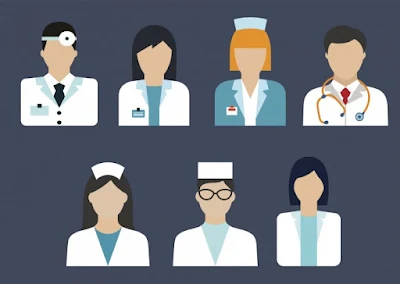by John Lynn
Believe it or not, EHR usability has worsened from 2014-2016 according to a study published in JAMA Network Open.
There was no statistical improvement in EHR SUS scores between products certified according to 2014 and 2015 standards. One-third of 2014 products and one-quarter of 2015 products fell below the average benchmark SUS score. Despite the implications of EHR dissatisfaction on clinician burnout and patient safety, SUS scores decreased by 44% of vendors from 2014 to 2015. We identified the 70 EHR vendors with the most attestations to meaningful use from health care facilities between July 1, 2016, and April 30, 2018. For inclusion in analysis the vendor must have had an EHR product with computerized provider order entry functionality, certified according to the safety-enhanced design criterion, and a reported SUS score for the 2014 and 2015 certification requirements. For each vendor, the usability report for the most recent version of the product meets the 2014 certification requirements (ie, before January 14, 2016, when the 2015 certification requirements became effective) and the usability report for the most recent version of the product meets the 2015 certification requirements were retrieved, and the SUS scores were analyzed. A paired t-test, with a 2-tailed P < .05 indicating statistical significance, was used to determine differences in SUS scores between 2014 and 2015, with means and standard deviations reported. All statistical analyses were performed with SPSS statistical software version 25 (IBM Corp).
Comparing the two years, EHR usability for 12 EHR products decreased, 13 increased, and two remained unchanged. During that same time period, one-third of the products in 2014 fell below the average benchmark, while one-quarter of the 2015 products fell below the average benchmark. Forty-four percent of SUS scores even decreased from 2014 to 2015.
“With the widespread adoption of electronic health records (EHRs), there is an increased focus on addressing the challenges of EHR usability, ie, the extent to which the technology enables users to achieve their goals effectively, efficiently, and satisfactorily,” the team wrote. “Poor usability is associated with clinician job dissatisfaction and burnout and could have patient safety consequences.”
Data confirms that the lion’s share of clinician burnout stems from hard-to-use EHRs, with most providers giving their tools poor ratings. Separate studies have linked EHR usability with patient harm, suggesting that poor navigability and EHR design can lead to patient safety issues.
Some efforts are underway to address the EHR usability problem. The EHR reporting program, which is a new program mandated by the 21st Century Cures Act, could also address EHR usability and drive patient safety.
The Department of Health and Human Services (HHS) and the Office of the National Coordinator for Health IT (ONC) have established a set of safety-enhanced design certification requirements for EHR usability. To satisfy the requirements ONC in August 2018 issued a request for information (RFI) seeking public comment about the EHR Reporting Program to inform the development and implementation of reporting criteria.
User complaints began before ONCHIT imposed meaningful use requirements and standards for interoperability were established. (2006). Thirteen years is a long time for a response from Congress for a vital system in healthcare The federal government's definition of meaningful use has nothing to do with usability. HHS's concept of meaningful use is based upon the ability to extract data for analysis. It took several years to establish a certifying body as well as work out the details.
All of this is a small part of the 21st Century Act that was signed into law in 2016. It is 360 pages in length.
EHR Usability Remains Unchanged, Impacts Clinician Burnout: Forty-four percent of EHR usability scores decreased from 2014 to 2015.
The digital health space refers to the integration of technology and health care services to improve the overall quality of health care delivery. It encompasses a wide range of innovative and emerging technologies such as wearables, telehealth, artificial intelligence, mobile health, and electronic health records (EHRs). The digital health space offers numerous benefits such as improved patient outcomes, increased access to health care, reduced costs, and improved communication and collaboration between patients and health care providers. For example, patients can now monitor their vital signs such as blood pressure and glucose levels from home using wearable devices and share the data with their doctors in real-time. Telehealth technology allows patients to consult with their health care providers remotely without having to travel to the hospital, making health care more accessible, particularly in remote or rural areas. Artificial intelligence can be used to analyze vast amounts of patient data to identify patterns, predict outcomes, and provide personalized treatment recommendations. Overall, the digital health space is rapidly evolving, and the integration of technology in health
Tuesday, June 23, 2020
How Technology is Helping Arizona Healthcare Leaders Prepare for COVID-19 Surges | Healthcare Innovation
 |
| Add caption |
One of the many early COVID-19 pandemic challenges for patient care organizations has been gaining transparency into critical resource shortages—such as bed capacity—that nearby hospitals and health systems are dealing with in real-time. As the crisis unfolded in the U.S., the early epicenter areas—mainly New York City, New Orleans, and Washington State—were the first regions to see their hospitals get bombarded with COVID-19 patients, thus making it difficult for those state leaders to prepare for what was coming.
But for states that have not been impacted as hard, and have been paying close attention to health systems’ early struggles with load balancing of critical resources, the opportunity has arisen to avoid having one area of a state be overwhelmed by COVID-19 patients while another region’s hospitals remain empty.
So, for states affected early by the pandemic it is difficult, while those areas which are affected later are better prepared by observation of early regional experiences, both positive and negative. The early victims go through a steep learning curve, and the effectiveness of the response becomes better with time. At the same time, those areas not severely affected can and should supplement the needs of heavily impacted areas. Data analytics interoperability can play a critical role in that endeavor
How Technology is Helping Arizona Healthcare Leaders Prepare for COVID-19 Surges | Healthcare Innovation:
Saturday, May 30, 2020
Large Tennessee insurer makes telehealth coverage permanent
As Digital Health Space predicted there will be many permanent changes in standard operating procedures as Covid-19 pandemic fades. The stumbling blocks which at times seemed insurmountable are falling away. No one could have predicted this change which took less than two months.
After most commercial insurers moved to expand their coverage of telehealth during the Covid-19 pandemic, health systems are watching to see if the changes will become permanent. BlueCross BlueShield of Tennessee was one of the first to make the move, saying it would keep its expanded telehealth coverage.
After most commercial insurers moved to expand their coverage of telehealth during the Covid-19 pandemic, health systems are watching to see if the changes will become permanent. BlueCross BlueShield of Tennessee was one of the first to make the move, saying it would keep its expanded telehealth coverage.
Tennessee’s largest commercial insurer was one of the first to signal its continued coverage of telehealth. Last week, it updated its plans to permanently keep expanded telehealth coverage.
“This recent period has proven virtual care can work for preventive, routine and maintenance care, and we’re making this decision because the added convenience can bring better health,” BlueCross BlueShield of Tennessee President and CEO JD Hickey said in a news release.
To start, the insurer just expanded its telehealth coverage to primary care providers, behavioral health providers and other specialists. Later, it began covering occupational therapy, speech therapy and applied behavioral analysis (ABA) therapy. The company will reimburse for both phone calls and video visits.
As health plans began to cover more telehealth visits, adoption soared. Between March 16 and April 14, BlueCross BlueShield of Tennessee saw 71,000 telehealth claims, 18 times more than it saw during the same period last year.
Telehealth startups and healthcare providers have similarly reported a sharp increase in telehealth visits, though overall patient volumes are still down since the start of the pandemic. Tennessee’s largest commercial insurer was one of the first to signal its continued coverage of telehealth. Last week, it updated its plans to permanently keep expanded telehealth coverage.
“This recent period has proven virtual care can work for preventive, routine and maintenance care, and we’re making this decision because the added convenience can bring better health,” BlueCross BlueShield of Tennessee President and CEO JD Hickey said in a news release.
To start, the insurer just expanded its telehealth coverage to primary care providers, behavioral health providers and other specialists. Later, it began covering occupational therapy, speech therapy and applied behavioral analysis (ABA) therapy. The company will reimburse for both phone calls and video visits.
As health plans began to cover more telehealth visits, adoption soared. Between March 16 and April 14, BlueCross BlueShield of Tennessee saw 71,000 telehealth claims, 18 times more than it saw during the same period last year.
CMS shares specifics on sweeping Medicare telehealth expansion
The Centers for Medicare and Medicaid Services provided guidance on new telehealth regulations that would allow Medicare to reimburse for more telehealth visits. While Medicare previously limited reimbursement to patients living in rural areas, HHS Secretary Alex Azar recently expanded it in light of the Covid-19 pandemic.
Centers for Medicare and Medicaid Services Administrator Seema Verma has hinted that the agency might keep some of the changes made to its telehealth coverage during the Covid-19 pandemic, though CMS hasn’t yet announced any specific plans. The sweeping changes could play an important role in the trajectory of the disease, letting older patients who face a higher risk from the disease receive care at home.
Prior to the changes, Medicare would only pay for telehealth visits when the patient was in a rural area and if they went to a clinic, hospital, or another medical facility to receive care. Now, Medicare will cover in-home visits, and for patients in any location. A broader range of providers will also be able to deliver telehealth services, including doctors, nurse practitioners and clinical psychologists, the Centers for Medicare and Medicaid Services explained.
If other insurers make similar moves, it could be a sign of things to come.
Thursday, May 28, 2020
A new artificial eye mimics and may outperform human eyes | Science News
A new artificial eye mimics and may outperform human eyes
The high-tech device boasts a field of view and reaction time similar to that of real eyes
The 'bionic eye' required several major innovations:
1. The sensors were placed in a. manner identical to the human eye, giving it the ability to have a wide angle field of view, unlike flat sensors. The human eye owes its wide field of view and high-resolution eyesight to the dome-shaped retina — an area at the back of the eyeball covered in light-detecting cells. Fan and colleagues used a curved aluminum oxide membrane, studded with nanosize sensors made of a light-sensitive material called a perovskite (SN: 7/26/17), to mimic that architecture in their synthetic eyeball. Wires attached to the artificial retina send readouts from those sensors to external circuitry for processing, just as nerve fibers relay signals from a real eyeball to the brain.2..
Crystals of perovskite on matrix
Researchers are betting on a class of sunlight-absorbing materials called perovskites to improve today’s solar cells. A perovskite’s cagelike crystal structure (right) surrounds a chunky ion such as methylammonium. The red, purple and orange balls are ions that can be varied so the material absorbs different wavelengths of light in its 3-D form (left).
Several unique manufacturing processes were necessary since the retinal light sensors (rods and cones) are intricately related to nerve fibers which connect to the brain. Attaching the electrodes required a unique microapplication connection.
Subscribe to:
Comments (Atom)








